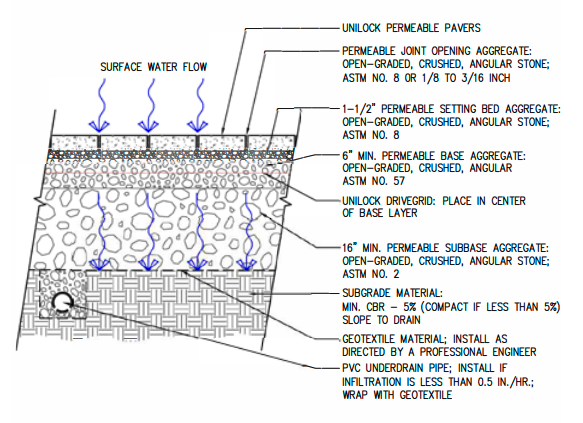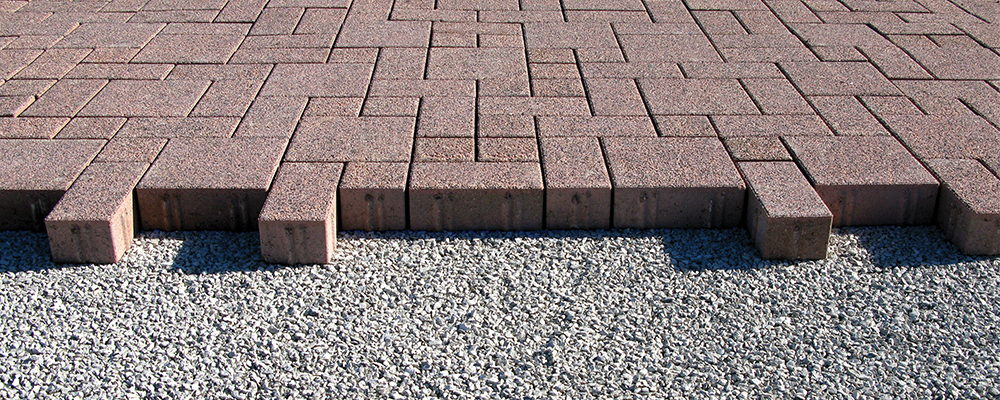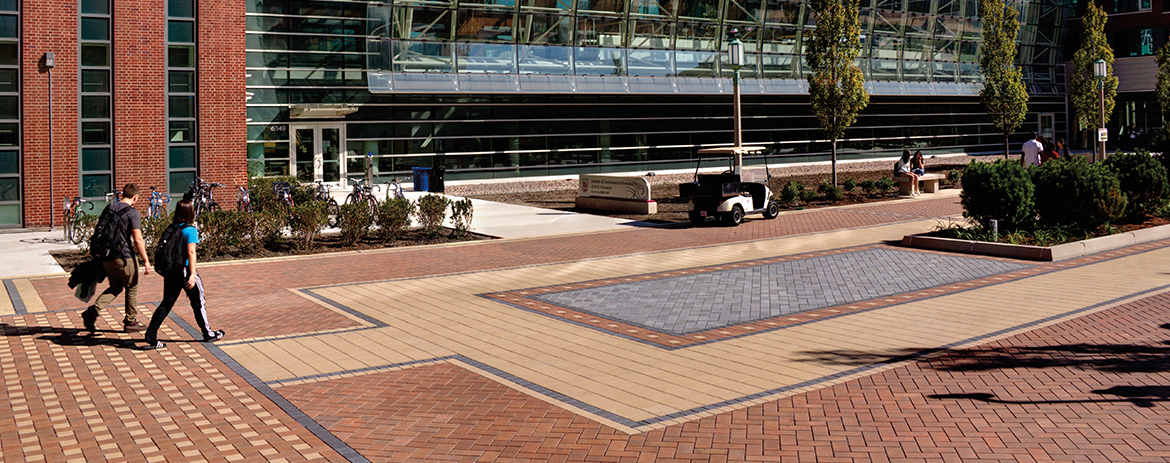Defining a Permeable Paver
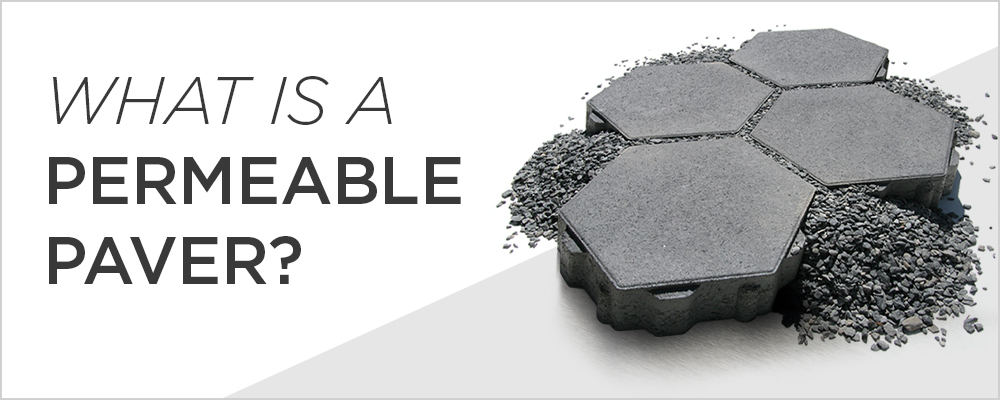
Author: Brad Swanson, ASLA, RLA, CSI, CDT, LEED AP
A handful of times a year a client or owner asks about the definition of a permeable paver. What makes a paver permeable? How is a ‘permeable paver’ different from a ‘non-permeable paver’? What is the criteria? There is no industry-wide accepted definition. The manufacturing of a Unilock permeable paver is exactly the same as a Unilock non-permeable paver. The same raw materials with the same ratios to create a durable, high strength concrete paver. The real difference between the two paver types is the joint width. On a permeable paver, the joints are significantly wider than a non-permeable paver or the permeable paver is made in a way that has an opening for rainwater. This is accomplished by creating wider spacer bars cast on the permeable paver sides. To be permeable, the rainwater must flow through these openings or joints for the system to work. On a non-permeable paver, the joints are much narrower and are filled with a joint sand that prevents water from draining off the surface quickly.
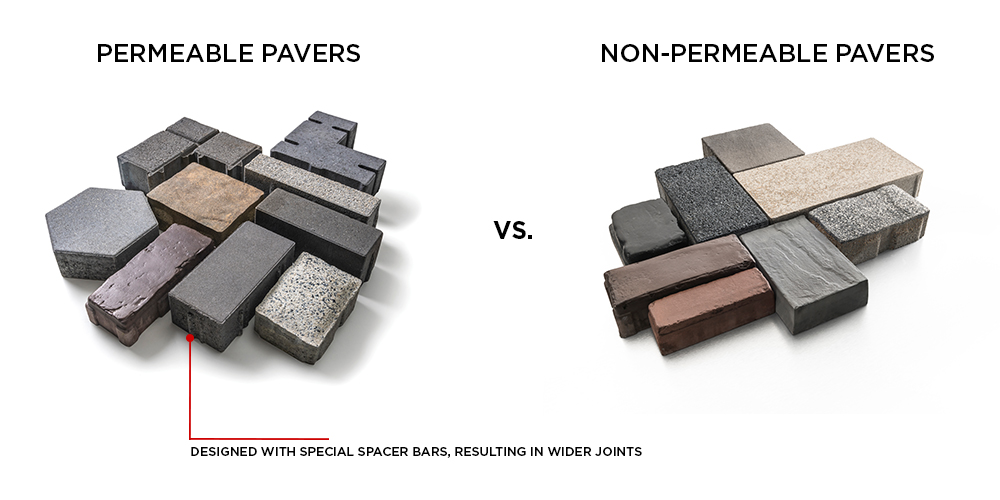
I don’t believe anyone or any organization has issued a definition of a paver permeable. There is fine line to defining a paver permeable because there are two parts. The joint width and the joint fill material.I would define permeable pavers as having a minimum joint width between paving units of at least 1/4 inch and with a void space ratio of at least 4%. Just so I’m being clear, the void space is calculated by taking the paver area coverage (including joint space), minus the paver base footprint. The result is the void space available for infiltration, which is shown as a percentage.I believe using the paver footprint (the area of the base of the paver unit) is more appropriate because the water will bottleneck as it flows through the footprint area. Therefore, it’s more important to measure this void space at the paver bottom. A non-permeable paver typically has joint widths between 1/16 and 3/16 inch. Most common is probably 1/8 inch or slightly less. Some pavers like Unilock tumbled Brussels Block pavers do not have spacer bars so they will have less than 1/16 joint width. Just wide enough for a bit of joint material, the second part. Permeable paver joints are not filled with sand. The proper joint material is a crushed, angular chip stone. Depending on the joint width, the crushed, angular chip stone may vary from about 1/16 up to 3/8 inch. There are two common sieve gradation for permeable chips. ASTM #9 for joint widths 1/4 or less and ASTM #8 for joint widths 1/2 inch or less.
Now I’m going to pause here to talk about this chip joint material because this is a critical component of the permeable system. In a non-permeable paver system, the joint material is either natural angular or polymeric sand. The main purpose of sand is to create ‘lock-up’ which is the friction between pavers that acts like a mortar to hold the paver units in place. For the permeable paver joint material, it is multi-purpose, in three ways. Like sand, the permeable chip’s main purpose is to bind the permeable paver together by creating a friction like sand in a non-permeable system. The second purpose is to allow rainwater to rapidly flow through the joints. If the joint material restricts water flow, then rainwater could drain off the surface and could contribute to flooding. The last purpose is to filter the water and capture metals, suspended solids, sediment and other debris. The closer these items are captured near the paver surface, the easier this is to clean.
Again, my permeable paver definition is a joint width of at least 1/4 inch wide and with a void space ratio of at least 4%. However, there is a third and probably more important consideration. This is the surface infiltration rate. Really, this is most important because it measures the permeable paver performance that includes the joint width, the void space and the joint material. We measure this in accordance with ASTM C1781, Standard Test Method for Surface Infiltration Rate of Permeable Unit Pavement Systems. This test measures the time at which a volume of water takes to drain from the surface. If we change one of the three critical components, either the joint width, joint void space or joint aggregate fill material, we would alter the speed at which the water will drain off this surface. The results could be faster or slower. For a properly installed permeable paver system the surface infiltration rate will typically range from 1,000 inches per hour at the high end, down to about 300 inches per hour. If there is no joint material, we have observed an infiltration rate over 1,500 inches per hour. But not having joint material creates other problems. You want joint material for lock-up and filtering capabilities.
So how does the surface infiltration rate help with the permeable paver definition? To understand this part of the equation it gets a bit complicated. That’s because the minimum surface infiltration rate is harder to define. As permeable paver systems start to clog naturally over time, it may pass below any threshold. We wouldn’t want to say the surface infiltration rate must be (for example) 20 inches per hour. Because a permeable paver that meets the minimum joint width and void space but fails the infiltration rate because of clogging doesn’t mean it’s not a permeable paver. Once cleaned, it would be restored above 20 inches per hour. Similarly, what we’d consider a non-permeable paver might exceed (again for example) 20 inches per hour without joint material. A better way to look at the surface infiltration rate is to consider the rainstorm intensity. The harder it rains, the faster the water must drain off the surface. The minimum infiltration rate would be based on the historic intensities for a 2, 10 and 100 year events, looking specifically at a five minute rate. To calculate those minimums, take the anticipated rainfall intensity and divide by the void space ratio. I would say the 100 year result is warning size, the 10 year result is urgency to provide joint maintenance and the 2 year is the last threshold. Once under the 2 year intensity, there will be water running off site. Unilock has done this work for you. See the chart below showing almost all the Unilock permeable pavers along with the common joint aggregate fill material. We’ve measured the infiltration rates for new installations using the ASTM C1781 test as shown. In addition, we’ve listed the Illinois 5 minute intensities for the median storm (shown as a 2 inch intensity, which I would call a “light rain”), along with the 2 year (4.5 inches), 10 year (6.5 inches) and 100 year (11 inches) based on the Bulletin 70 of the Illinois State Water Survey. These would be very similar intensity numbers for most areas in the Midwest and Northeast. Coastal states, the West, Southwest would have different intensities but easily can be found for your region. These rates ultimately define what is permeable or not. If the paver system can’t capture the smallest of storms when the system is first installed, then it’s definitely not a permeable paver.
Infiltration Rates for Unilock Permeable Pavers (Newly Installed)
At Unilock, we pride ourselves on the variety of paving options available to support your design vision for vehicular and pedestrian traffic. Our products are offered in a variety of colors and finishes to easily and beautifully make distinctions between traffic flows. Check out some of our commonly used products for streetscapes!
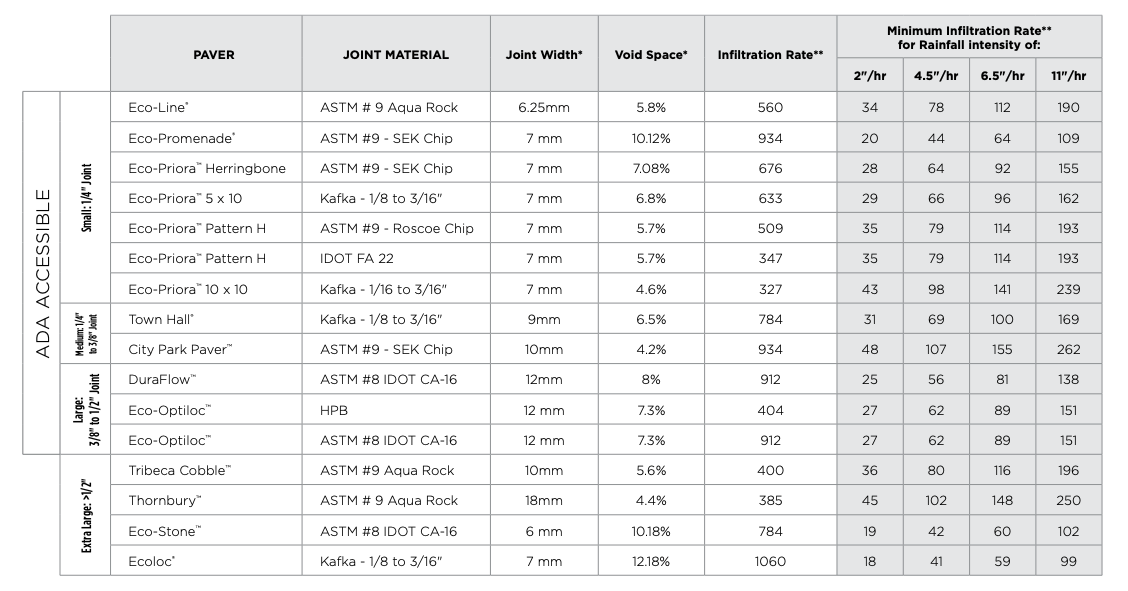
NOTE:The 2”, 4.5”, 6.5” and 11” per hour Rainfall Intensity examples are based on common 5 minute rainfall intensity charts and are not the same as total rainfall quantity. *Joint Width is measured at the top of the paver. Void Space is calculated at the base of the paver. **Infiltration rate is inches per hour based on testing done when first installed and is an approximation.
These three determining factors I’ve discussed above, the joint width, void-space percentage and surface infiltration rates, are how I concluded my definition of a permeable paver. 1) If the joint width is less than 1/4 inch, it begins to significantly restrict water flow due to the joint fill material size. Anything narrower would be problematic. 2) As the void space ratio dips below 4%, the minimum infiltration rate increases to over a 100 inches per hour for the 2 year intensity. This becomes a threshold benchmark for long term performance with a 3x factor of safety. 3) The combination of the joint width with joint material fill and the minimum void space percentage has measured an initial surface infiltration rate of 300 inches per hour matching the 3x factor of safety. These three factors are all tied together and help me determine my definition of a permeable paver. I hope my definition has been insightful and clarifying.
To hear my explanation of this topic and about permeable paver systems, please watch our virtual presentation at https://www.youtube.com/watch?v=57vfpklASug&feature=youtu.be

